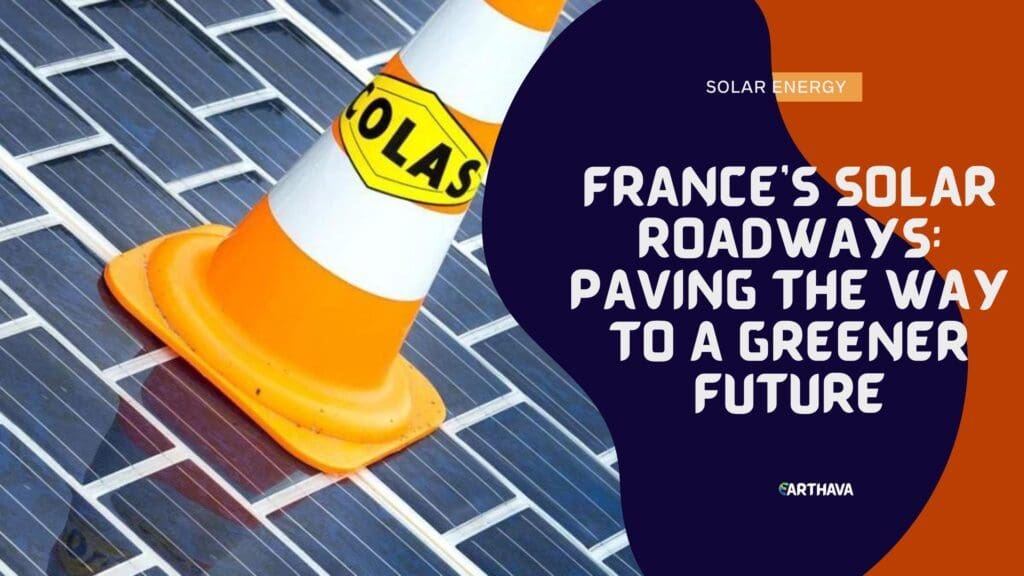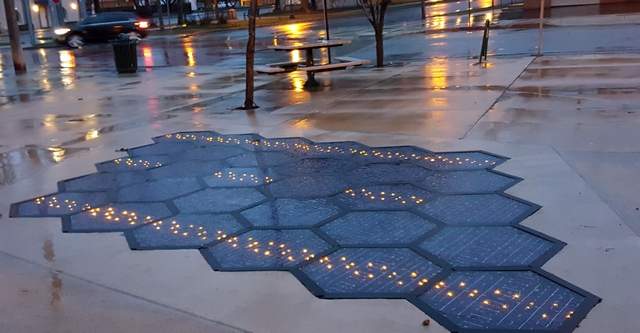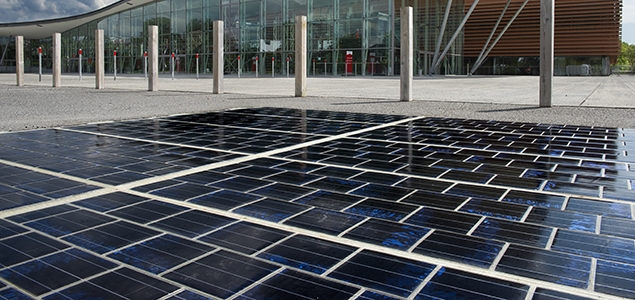The concept of renewable energy sources has been around for quite some time now. Most energy production methods are becoming greener every day. Then there came the idea of solar panels. That went on well and they have been in use for decades. But now imagine a roadway made of solar panels. That’s the story you wouldn’t believe can be achieved.

The idea
The French government through the Ministry of Ecology and Energy is planning to install solar panels on the existing 621 miles of roadway. This is approximately 1,000 kilometers of road pavement. This is an energy-generating project which is expected to take about five (5) years after its commencement. The project was under research for 5 years (from 2009 to 2014) and after all the testing and adjustments the first prototype was rolled out and tested in the year 2015.
It was then that the company, Colas, was officially given the tender for constructing the proposed 621 miles of solar pavements. The Waterway panels, as they are called, are made extremely thin but very tough. In fact, they can withstand any road usage, including heavy trucks and chain caterpillars. The panels are 7 mm thick or rather a quarter inch thick and are made up of photovoltaic cells put in a tile-like manner which are then mounted on a silicon layer. It is the silicon layer that will be placed on top of the existing roads.
However innovative the project may seem to be, it is not actually the first one to be put in place or even researched. In fact, the Netherlands government has done a similar project in 2014 but for them, they set up solar panels on bike pavements which differ from the projection in France which will install the panels on roadways used by all kinds of vehicles. The 70-meter project in the Netherlands worked well and it, in fact, exceeded their expectations in terms of total energy generated (3,000 kW/h of electricity). Japan is also working on a similar prototype but they are planning on installing their panels on mass water bodies.
The numbers

After completion, 1 km of the solar roadways are expected to produce enough electricity to power a small town of up to 5,000 of inhabitants. This mathematically implies that 20 m² of the pavement installed with solar panels will produce sufficient electricity for a single household. “The long-term effect of the project if successful would be to furnish about 5 million people with electricity or about 8 percent of the French population,” said France’s minister of Ecology and Energy Ségolène Royal.
Generally speaking, the French roads are usually unoccupied for about 90% of the day. This will imply that in that 90% of the day the panels will be properly exposed to the sunlight which then will mean that green energy will be produced. Forbes reported that the first physical test of the panels on a road will be done on a 1km stretch of road in order to monitor the progress.
This test will also see to the production of enough energy for about 5,000 people. The panels are expected to last up to 10 years in busy traffic and 20 years of time in less busy roads. The cost is estimated to be around $70 per square foot depending on the quality. The total amount directed to this project is expected to be millions of dollars.
Pros
The project will generate high amounts of green energy. This is the bottom line of the idea. So the whole project will enable the production of enough electricity to be used in homes as well as street and traffic lights. Injecting such high amounts of energy into the grid will lower the amounts of energy produced through non-renewable energy methods thus conserving the environment as a result of few CO2 emission.
The project will not require farmlands or rooftops. The roads currently have one use – for motorists. Adding another purpose to them without disrupting the regular usage would be pretty much economical.
The existing road structure will be maintained. There will be no need to tear up the existing forms of roadways to install the solar panels. They are designed to fit on the road still in its normal form.
The solar panels are skid-resistance. The silicon layer mounted on top of the solar panels ensure that they provide enough grip to the tire of the vehicles thus reducing chances of skidding on the roads – just like the normal roads.
Durability. The investment is expected to last for many years to come. This means that it is in a position to withstand harsh climatic conditions including rain and still maintain its normal functioning.
Cons

The project will be an expensive venture. Without any doubt, the project will lead to a high amount of revenue being directed to it. It will be generally costly.
It is not ideal for all roads. Some French roads are full of traffic. These would be some of the points on the roadways which would not be ideal for installations. Also, roads covered with shade for the most part of the day will also be unreliable to this venture.
This is a new project. It hasn’t been tested adequately and therefore investing highly in it could be dangerous.
Maintenance might be costly. Regular maintenance like keeping the panels clean as well as repairing when they are not functional might also cost the government a lot more than they expect.
In a nutshell, this is a very productive kind of venture the government of France is trying to set up. When successful, it will improve the levels of energy productions in the country. However, if it goes wrong, the France government would have built the biggest white elephant in its history.


